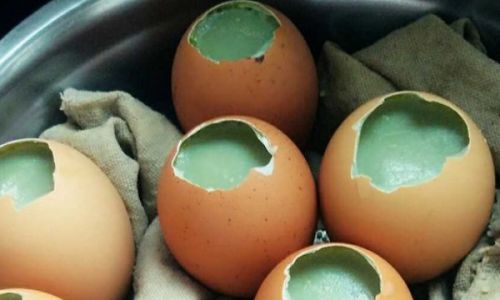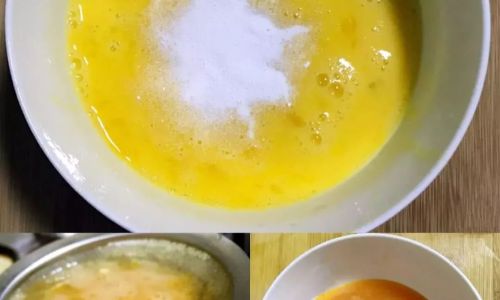Table of content
Introduction
Steamed solid eggs, also known as steamed custard or steamed egg pudding in some cultures, are a delightful and nutritious dish enjoyed worldwide. This simple yet elegant preparation showcases the natural flavor and texture of eggs, enhanced by minimal seasoning and cooking techniques. Unlike scrambled, fried, or boiled eggs, steamed solid eggs offer a silky, smooth consistency that melts in your mouth, making them an ideal choice for breakfast, lunch, dinner, or even as a snack.

In this comprehensive guide, we will delve into the art of making perfectly steamed solid eggs. From selecting the right ingredients to mastering the steaming process, we’ll cover every step in detail, ensuring you can recreate this culinary delight at home with ease. Whether you’re a seasoned chef or a novice in the kitchen, following these guidelines will help you achieve consistent results every time.
Ingredients and Tools
Before we dive into the steps, let’s first gather the necessary ingredients and tools:
Ingredients:
- Fresh large eggs: 3-4 (adjust based on serving size)
- Water: Approximately 1.5 times the volume of the eggs (measured in the same cup or bowl)
- Salt: A pinch (optional, but enhances flavor)
- Soy sauce, sesame oil, or other condiments for serving (optional)
Tools:
- Mixing bowls
- Whisk or fork
- Steamer or a pot with a steaming rack
- Heatproof plate or bowl for steaming
- Measuring cups or spoons
- Spatula or knife for serving
Step-by-Step Guide
Step 1: Preparation and Measurement
-
Select Fresh Eggs: Start with fresh, large eggs. Freshness is crucial as it affects both the texture and flavor of your steamed eggs. Older eggs tend to have a more watery consistency and can result in a less cohesive final product.
-
Measure Water: Use a measuring cup to determine the amount of water needed. Generally, you’ll want to use approximately 1.5 times the volume of the eggs you’re using. For example, if you’re using 3 large eggs, which typically measure around 1/2 cup each, you would use about 2.25 cups of water.
-
Prepare the Steamer: Set up your steamer or a pot with a steaming rack. Fill the bottom with enough water to reach just below the level of the rack. Bring the water to a boil before adding your egg mixture.
Step 2: Mixing the Egg Mixture
-
Break the Eggs: Crack the eggs into a mixing bowl, making sure no shell fragments get in.
-
Add Water and Salt: Gradually add the measured water to the eggs while whisking continuously. This ensures a smooth blend without any streaks of egg white or yolk. Add a pinch of salt if desired.
-
Strain the Mixture: For an extra-smooth texture, pass the egg mixture through a fine-mesh sieve or strainer. This removes any lumps or bubbles that could mar the final appearance and texture.
-
Skim the Foam: If there’s any foam on the surface of the mixture, use a spoon to skim it off. Foam can cause uneven steaming and small pockets of air in your final dish.
Step 3: Steaming the Eggs
-
Pour into a Steaming Dish: Pour the prepared egg mixture into a heatproof plate or bowl that fits comfortably in your steamer. Make sure the dish isn’t too deep, as this can make it difficult for the steam to penetrate evenly.
-
Cover and Steam: Place the dish in the steamer, cover, and reduce the heat to medium-low. The key to perfect steamed eggs is gentle, consistent heat. Steaming too vigorously can cause the eggs to curdle or form large bubbles.
-
Timing: Steam for about 10-15 minutes, depending on the desired firmness. For softer, more custard-like eggs, steam for closer to 10 minutes. For firmer, more solid eggs, steam for up to 15 minutes. Keep in mind that the eggs will continue to cook slightly after being removed from the steamer, so err on the side of slightly less time if you’re unsure.
-
Check for Doneness: Carefully lift the lid to check the eggs’ progress. The surface should be smooth and slightly set, with no visible liquid egg mixture. If there are still wet spots, steam for an additional 1-2 minutes and check again.
Step 4: Cooling and Serving
-
Cool Slightly: Once done, remove the dish from the steamer and let it cool for a few minutes. This helps the eggs firm up further and prevents them from being too runny when served.

-
Serve Warm or at Room Temperature: Steamed solid eggs can be served immediately while still warm, or allowed to cool to room temperature for a different texture and flavor profile.
-
Add Condiments: Serve with a drizzle of soy sauce, sesame oil, chopped green onions, or other condiments of your choice. These additions can elevate the dish from simple to sublime.
Troubleshooting Tips
-
Lumpy Texture: If your steamed eggs turn out lumpy, it’s likely due to unmixed egg whites or yolks. Make sure to whisk thoroughly and strain the mixture to remove any lumps.
-
Watery Consistency: Watery eggs can result from using older eggs or not steaming long enough. Always use fresh eggs and adjust the steaming time based on your desired firmness.
-
Large Bubbles: Bubbles can form due to excess air in the mixture or too vigorous steaming. Skimming the foam and using gentle heat can help prevent this.
-
Overcooked Eggs: Overcooked eggs can be dry and rubbery. Use a timer and keep a close eye on them, removing them from the steamer as soon as they’re set to avoid overcooking.
Variations and Enhancements
While the basic recipe for steamed solid eggs is straightforward, there are numerous ways to elevate this dish:
-
Add-Ins: Incorporate ingredients like shrimp, mushrooms, or diced pork for a more filling meal.
-
Herbs and Spices: Infuse the egg mixture with a touch of ginger, garlic, or green onions for added flavor.
-
Cheese: Add a sprinkle of cheese before steaming for a creamy, cheesy twist.
-
Sauces: Serve with a savory sauce like hoisin or chili sauce for an extra layer of flavor.
Conclusion
Making perfectly steamed solid eggs may seem like a simple task, but achieving the right balance of texture and flavor requires attention to detail and a bit of practice. By following the steps outlined in this guide, you’ll be able to create a dish that’s as visually appealing as it is delicious. Whether you’re serving it as a standalone meal or as part of a larger spread, steamed solid eggs are sure to impress and delight your guests.
Remember, the beauty of this dish lies in its simplicity and versatility. Feel free to experiment with different ingredients and techniques to find your perfect version of steamed solid eggs. With each attempt, you’ll gain a deeper understanding of the process and develop your own unique twist on this timeless culinary classic.
So, the next time you’re in the mood for something comforting and nutritious, give steamed solid eggs a try. With a little patience and care, you’ll soon be enjoying a silky, smooth treat that’s as satisfying as it is satisfying to make. Happy steaming!





0 comments